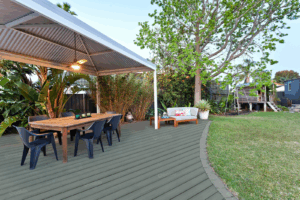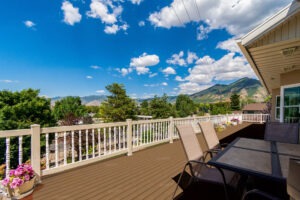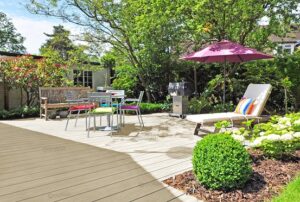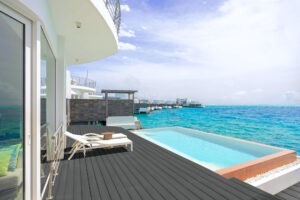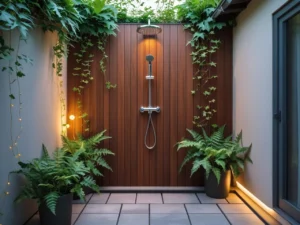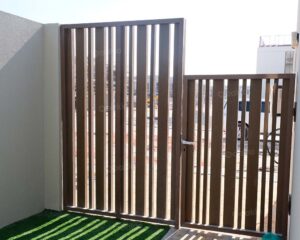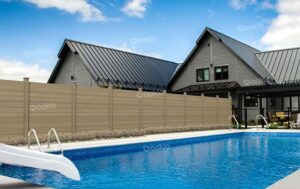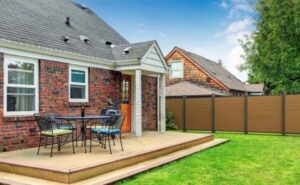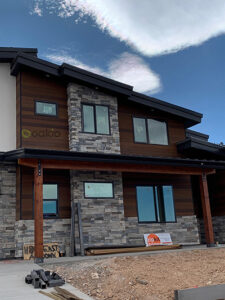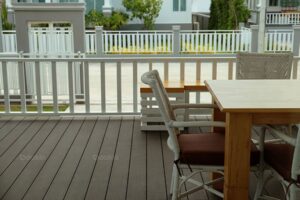Why Choose WPC Pergola for Garden Design?
A beautiful garden isn’t complete without a charming pergola woven with climbing plants and colorful flowers. A well-designed pergola not only enhances the aesthetics of your outdoor space but also serves as a practical structure for shade, relaxation, and plant support. In recent years, WPC pergola for garden design has emerged as a popular trend, offering a perfect blend of natural beauty and modern durability.
WPC, or wood-plastic composite, has revolutionized the landscaping and construction industries with its remarkable qualities. As homeowners and landscape designers search for materials that balance aesthetics with performance, WPC pergolas offer a compelling solution for courtyard and garden settings.
WPC Pergola: Blending Nature and Architecture
Imagine a courtyard filled with blooming flowers and green vines climbing up a pergola. In spring, the branches twine around the structure, creating a vibrant canopy of life. Placing a pergola in a sunny corner of the garden allows plants to thrive while adding architectural interest to the space.
WPC pergolas can be designed as standalone garden art pieces or seamlessly integrated with overall landscape design. Whether placed near a patio, walkway, or in the center of a lawn, they serve as visual focal points that combine form and function.
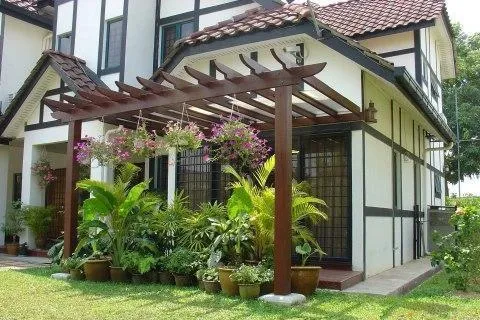
What Makes WPC an Ideal Material for Garden Pergolas?
Unlike traditional wood or metal materials, WPC combines the best of both worlds. Made from a mixture of recycled wood fibers and plastic polymers, WPC pergolas offer several compelling benefits:
Rich Visual Appeal
Thanks to advances in surface finishing, WPC profiles now feature realistic wood grain textures and colors that mimic high-end hardwoods. These finishes create a luxurious yet natural look, removing the cold, industrial feel of metal and replacing it with warm, wood-like tones.
Whether you prefer the classic charm of oak or the exotic flair of teak, WPC can be tailored to imitate hundreds of wood species—without cutting down a single tree.
Durability and Stability
One of WPC’s strongest advantages is its resistance to environmental stress. It doesn’t warp, crack, splinter, or fade like wood. Even in harsh sunlight, heavy rain, or humid climates, WPC pergolas retain their strength and appearance.
WPC also has excellent dimensional stability, meaning it won’t expand or contract significantly with temperature changes. This ensures structural integrity over time.
Installation Made Easy
WPC pergolas are engineered for quick and efficient installation. The materials can be cut, drilled, and assembled much like wood, but without the mess or complexity of sanding, sealing, or painting.
Additionally, since WPC surfaces are smooth and even, they eliminate the need for additional finishes. This speeds up construction time and reduces labor costs—ideal for landscape projects with tight deadlines.
Long-Term Maintenance Savings
Natural wood pergolas typically require regular sealing, staining, or painting to keep them looking fresh. They are also prone to rot, termite attacks, and mildew in humid environments.
In contrast, WPC pergolas are low-maintenance. They resist:
- UV fading
- Moisture and water damage
- Mold and mildew
- Acid and alkali corrosion
- Insects and pests
With minimal cleaning—usually just soap and water—WPC structures can maintain their color and shape for years, making them an economical choice for homeowners and property developers alike.
Eco-Friendly and Sustainable Landscaping
Today’s homeowners are more eco-conscious than ever. WPC materials are made from recycled wood and plastic, making them a sustainable choice. They help reduce deforestation and plastic waste while delivering superior performance.
This makes WPC pergolas a perfect match for the growing movement toward green building and sustainable landscaping.
Visual Harmony with Nature
WPC pergolas satisfy the human desire to connect with nature. Their natural-looking surfaces, free from glare and artificial gloss, blend seamlessly into garden environments. The material supports a variety of climbing plants such as:
- Wisteria
- Clematis
- Honeysuckle
- Grape vines
- Bougainvillea
As these plants grow, they intertwine with the pergola, creating shaded retreats and visually stunning garden structures that enhance biodiversity and relaxation.
Superior to Other Outdoor Materials
When compared to alternatives like metal, vinyl, or untreated wood, WPC stands out in several areas:
| Feature | Wood | Metal | WPC |
| Natural appearance | ✅ | ❌ | ✅ |
| Weather resistance | ❌ | ✅ | ✅ |
| Maintenance required | High | Medium | Low |
| Customizable design | ✅ | ✅ | ✅ |
| Eco-friendly | ❌ (unless FSC) | ❌ | (Recycled) |
Choose WPC Pergola For Garden Design
A WPC pergola design for gardens brings elegance, practicality, and sustainability into outdoor living spaces. With its realistic wood look, exceptional durability, and minimal maintenance requirements, WPC offers a smarter alternative to traditional building materials.
Whether you’re creating a private retreat in your backyard or a welcoming feature in a public park, a WPC pergola will elevate your garden with both charm and performance. As the landscaping world continues to embrace innovation, WPC is poised to become the material of choice for modern outdoor structures.
Trending Reading
What Are the Differences Between the WPC Board and PVC Board?
[2025 Update] How Long Does WPC Decking Last?
